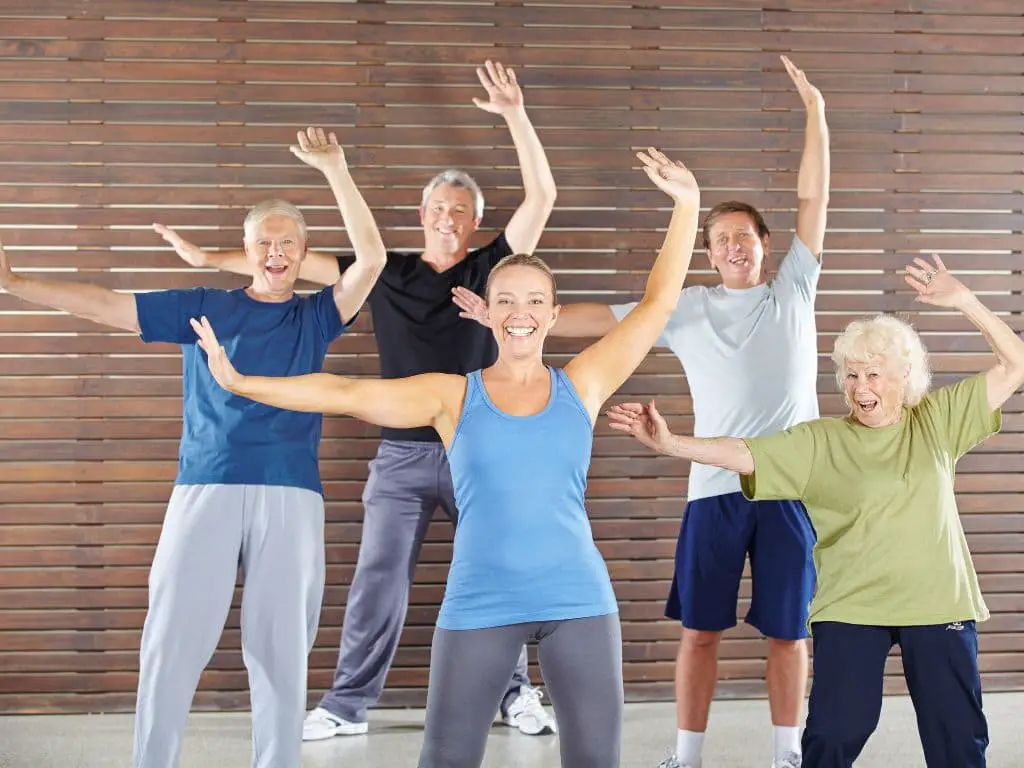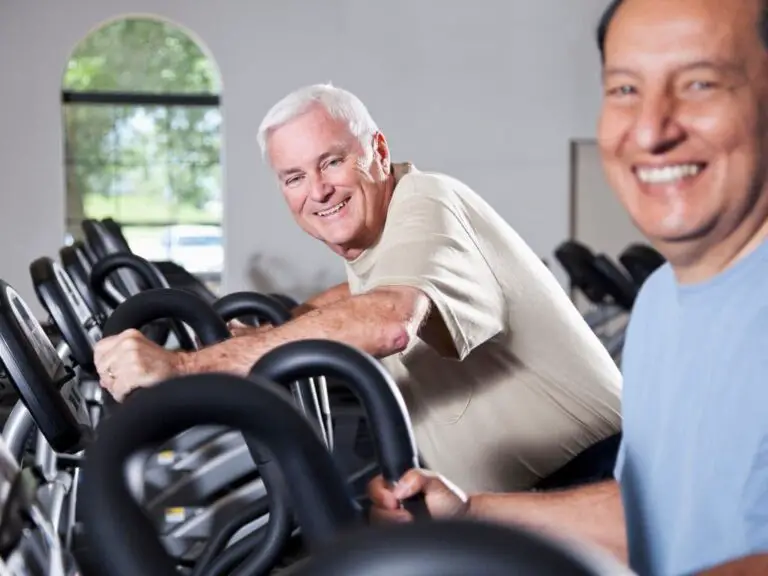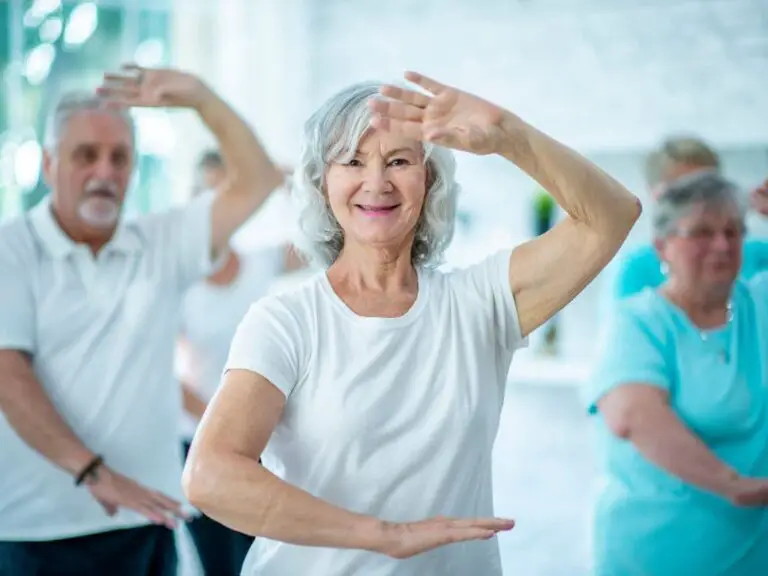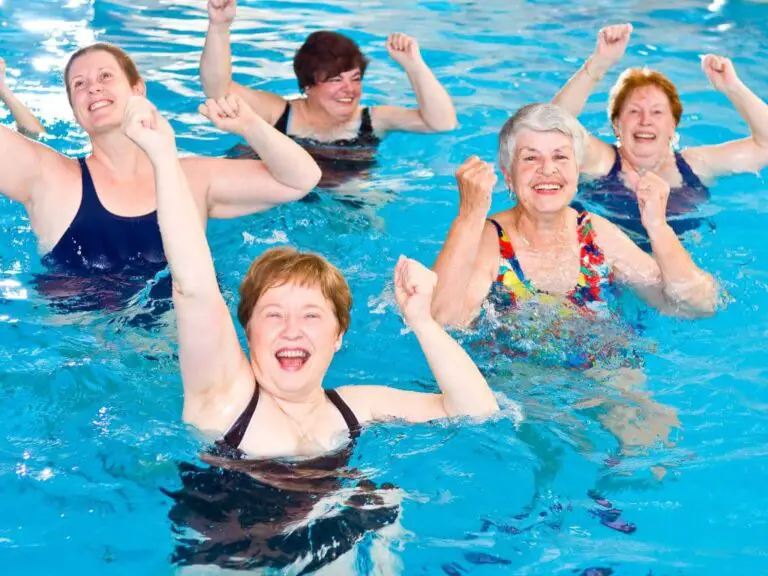What Happens When Old People Don’t Exercise?
Regular physical activity is extremely important for older adults to maintain their health, independence, and quality of life. However, many seniors do not get enough exercise. Lack of physical activity can have serious consequences for the physical and mental well-being of older people.
When older adults don’t exercise, they risk significant declines in physical health and abilities. This includes loss of muscle mass and strength, reduced endurance, joint stiffness, decreased balance, and accelerated bone density loss, which can lead to falls and fractures. Sedentary behavior also increases the risk of chronic diseases, negatively impacts mental health, and can lead to a diminished quality of life.

What are the Physical and Mental Effects of Exercise on Older Adults?
Exercise provides a range of benefits for seniors both physically and mentally.
On a physical level, regular activity helps older adults retain muscle mass and strength. It also promotes cardiovascular health, improving the function of the heart, lungs and circulation. Other physical benefits include reduced risk of obesity, type 2 diabetes, osteoporosis, heart disease, stroke and some cancers. Exercise helps maintain balance, flexibility and mobility too. This enables seniors to remain independent and carry out daily activities.
Mentally, exercise releases feel-good chemicals called endorphins that boost mood and reduce depression. It also promotes better sleep and cognitive function. Overall, physical activity is linked to greater well-being and quality of life in older age.
How Does Regular Exercise Prevent or Delay Age-Related Health Problems?
The various health conditions associated with aging can be prevented or managed with regular fitness.
Aerobic exercise improves cardiovascular health, helping to prevent chronic diseases like heart disease, stroke and type 2 diabetes. It also lowers blood pressure and cholesterol levels.
Weight-bearing and resistance training exercises help maintain bone density. This reduces the risk of developing osteoporosis and dangerous bone fractures.
Being active reduces inflammation throughout the body which is linked to diseases like cancer. It also helps manage joint pain from arthritis.
In terms of mental health, exercise helps prevent and treat depression and anxiety in older adults. It also boosts cognitive function and may help prevent dementia.
Overall, seniors who exercise regularly tend to live longer, healthier lives with a better quality of life.
How Does Exercise Improve the Physical Function of Older Adults?
Exercise allows seniors to retain and even improve their physical abilities and function as they age.
Activities like walking, swimming and dancing build endurance. This enables older people to stay active for longer periods without getting tired.
Lifting weights and using resistance bands can increase muscle mass and strength. This makes daily activities like climbing stairs, carrying groceries and getting out of chairs much easier.
Exercises focusing on balance, such as Tai Chi, help seniors avoid dangerous falls and subsequent injuries like broken hips.
Stretching keeps the joints and muscles flexible, allowing for greater freedom of movement and less joint pain.
Overall, staying active preserves seniors’ ability to do everyday tasks and live independently. It also improves confidence in their physical abilities.
What are the Risks of Not Exercising for Older Adults?
Failure to exercise leads to significant declines in seniors’ physical abilities and overall health.
Without regular activity, older adults lose substantial muscle mass and strength. This makes movements like standing up, walking and lifting objects much more difficult.
Endurance decreases dramatically too, meaning seniors get exhausted from minimal exertion. Basic activities like shopping or cleaning become challenging.
Lack of exercise leads to stiffness in the joints and reduced balance. This massively increases seniors’ risk of dangerous falls and serious injuries.
Being sedentary accelerates bone density loss, making painful fractures more likely. It also slows the metabolism, making weight gain easier.
Overall, inactivity can rob seniors of their independence and quality of life as they find everyday activities increasingly difficult. It also puts them at greater risk of disability and chronic diseases.
What Types of Exercise are Safe and Effective for Older Adults?
There are many great exercise options for seniors that are both safe and beneficial.
Low impact aerobic exercises like walking, swimming and cycling deliver excellent cardiovascular and endurance benefits without stressing the joints.
Strength training using weights, resistance bands or even just bodyweight exercises help maintain muscle tone and strength. This makes daily activities much easier.
Flexibility exercises like yoga and tai chi increase seniors’ range of motionand balance while reducing joint pain.
Exercises that improve coordination, such as dancing, reduce seniors’ risk of falls and help keep their minds sharp.
Overall, the best programs incorporate aerobic, strength, balance and flexibility activities. Consulting a doctor or physical therapist can help identify the most suitable and safe routines.
How Much Exercise Do Older Adults Need for Optimal Health?
Health organizations recommend 150 minutes per week of moderate intensity aerobic activity, plus muscle strengthening exercises at least 2 days per week for seniors.
Aerobic exercise should aim to raise the heart rate and be done in bouts of at least 10 minutes. Seniors who are frail or have chronic conditions may need to start with smaller amounts of gentle activity and build up slowly.
In addition, older adults should do balance training and flexibility exercises to reduce falls risk and maintain mobility. Stretching major muscle groups 2-3 times per week is recommended.
While 150 minutes per week is the standard goal, research shows that seniors who exercise more than this, even just by walking regularly, gain additional health benefits and improved quality of life.
The key is to find activities seniors enjoy and can stick with long term. Exercising with friends or in groups can aid motivation. Supportive family members can help too.
How Can Older Adults Get Started with an Exercise Program?
It’s never too late for seniors to get active. Here are some tips to safely start a new exercise routine:
- Get medical clearance, especially if having symptoms or chronic health conditions
- Start slowly – 10 minutes a day is a great beginning
- Focus on low-impact aerobic exercises like walking or swimming
- Use chairs for support during strength and balance activities
- Work with a fitness professional who understands seniors’ needs
- Exercise at home or at senior-friendly gyms and recreation centers
- Invite friends and family members to join you
- Set manageable goals and build up gradually over time
- Focus on enjoyment – try different activities to find what you like best
The health and quality of life benefits of staying active in older age are immense. With the right approach, seniors can establish sustainable, safe exercise habits and achieve real fitness gains, regardless of their current ability level.
Frequently Asked Questions
-
How far should an 82 year old walk?
According to a study in The International Journal of Behavioral Nutrition and Physical Activity, the daily step count for an average older person is between 2,000 and 9,000.
-
What is the most common cause of depression in the elderly?
Depression and social isolation in the elderly. To thrive and survive, everyone needs to have social relationships. As people get older, many find that they spend more time by themselves. Research shows that depression rates are higher in those who live alone and without social support.
-
What happens when old people don’t exercise?
People over 50 can suffer from a variety of health issues, including reduced muscle mass, strength, and endurance. Balance and coordination problems. Mobility and joint flexibility are reduced.
-
What causes poor physical health?
Poor lifestyle habits and poor health are undoubtedly factors in poor physical and chronic diseases. The present review shows that SMI individuals have a high prevalence of unhealthy lifestyle behaviors, including low exercise, drinking, substance abuse and smoking and dangerous sexual behavior.
-
What is the role of activity programs for the wellness model?
Employers can use activity rewards programs to encourage healthy behavior. Wellness programs aim to encourage healthy behaviors and promote healthier habits. Participants can be rewarded by choosing healthy lifestyle choices every day with activity rewards.
-
What are the different types of wellness?
There are many types of wellbeing: emotional, mental, intellectual, spiritual, physical and social.
-
Am I obligated to take care of my parents?
The U.S. does not require children to care for elderly parents. This is up to the states. Some states require that children who are financially stable support their parents, while others only provide specific health care needs. Some states do not require that children of elderly adults make such an obligation.
-
What are the 5 factors of the indivisible self?
This factor includes five elements: control, thinking, emotion, work, and positive humor. Research and clinical experience show that what we think can have an impact on our emotions, as well as our bodies.
-
What are the 6 aspects of wellness?
Six Dimensions of Wellness are promoted by the National Wellness Institute: Emotional, Occupational, Physical, Social, Intellectual, and Spiritual. A holistic approach to wellness will help you feel fulfilled and happy.
-
Are wellness accounts taxable?
The Wellness Spending Account is considered a tax-deductible benefit. The employee’s WSA allowance is a taxable benefit. This means that the employees’ taxable income increases each year. An employee’s taxable income does not include any money that isn’t used in their WSA plans.
-
What is a wellness program for seniors?
These professionals regularly offer education about nutrition for senior citizens. Many wellness programs have dietitians or nurses who can create menu plans for senior citizens. They also promote safety at home. Participants can learn how to make homes safer by joining a wellness programme.
-
What can I use my nonstop wellness card for?
The Nonstop Visa card can be used for approved, in-network prescriptions and services. You cannot use the card for elective or out-of network services or any other procedures that are not covered by your insurance.
-
What are the 5 areas of health and wellness?
Personal health can be described as five major aspects: emotional, mental, social, spiritual and intellectual. It is essential that these five areas are not neglected in order to feel “well”.
-
What is wellness program in school?
Teachers’ wellness program is an important concept. This program focuses on the overall well-being and health of teachers from all angles: physical, mental, financial, occupational, social, environment, spiritual, and spiritual.
-
What are wellness dollars?
What is a wellness dollar? Many insurance companies offer wellness dollars as a portion of their premiums to clients for use in qualifying programs. It’s not possible for all insurance companies to offer wellness dollars. Ask.







